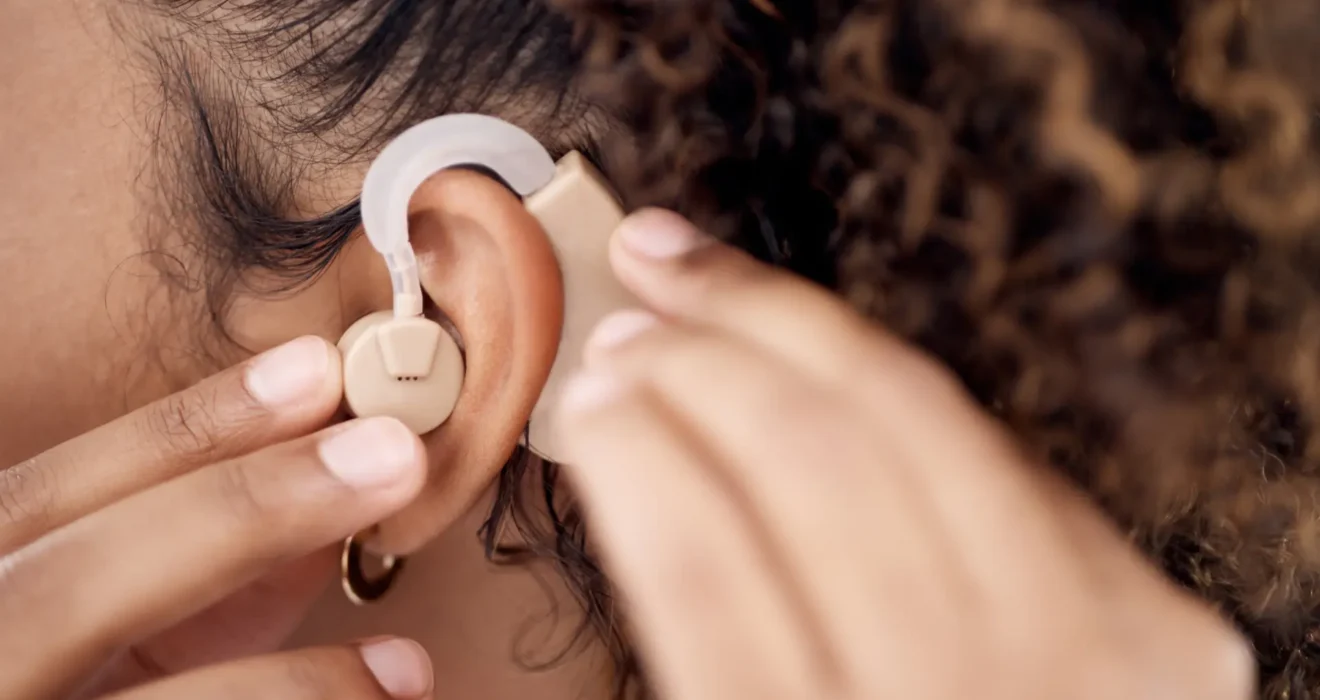Common Myths About Hearing Aids: Debunking Them – Aum Ent Clinic
Hearing Loss is a serious affliction, affecting millions of people all over the world. According to the World Health Organization (WHO), approximately 466 million people globally have disabling hearing loss. In India alone, around 63 million people suffer from significant auditory impairment.
Hearing aids are small electronic devices that can be worn in or behind the ear to improve hearing ability. They amplify sound, making it easier for individuals with hearing loss to hear and communicate better. Hearing aids significantly improve the quality of life for those with hearing loss, reviving their personal, social, and professional life.
Even though hearing loss is so widespread, there are many myths and misconceptions about hearing aids that persist. This can often deter individuals from getting the help that they need.
Let’s go ahead and debunk some of the most common myths about hearing aids:
Myth 1: Hearing aids are only for older people
Fact: While it is true that as you grow older, your sense of hearing deteriorates. So older people are more susceptible to hearing loss. However, it can affect people of all ages. Young people and even children can experience hearing loss due to various factors such as genetics, infections, noise exposure, or trauma. Modern hearing aids cater to a wide range of age groups and hearing needs. They come in various styles and technologies that can be customized to suit individuals of any age, making it possible for anyone with hearing loss to find a suitable solution.
Myth 2: Hearing aids can restore hearing ability to normal
Fact: Hearing aids do not cure hearing loss or restore hearing to normal levels. All they do is amplify sounds to make them more audible to the wearer. The effectiveness of a hearing aid depends on the individual’s specific type and degree of hearing loss. While hearing aids can greatly improve the ability to hear, they are no substitute for natural hearing. It is important to have realistic expectations and understand that hearing aids are assistive devices designed to enhance hearing rather than restore it.
Myth 3: Hearing aids look bulky and unattractive
Fact: Thanks to advancements in technology, sleek, discreet, and highly effective hearing aids are now available. Modern hearing aids come in a variety of styles, including behind-the-ear (BTE), in-the-ear (ITE), and completely-in-canal (CIC) models, many of which are practically invisible when worn. Some models are so small and discreet that others will hardly notice you are wearing them. Manufacturers prioritize aesthetics and comfort, ensuring that hearing aids are not only functional but also stylish.
Myth 4: Hearing aids are not easy to use
Fact: Modern hearing aids are user-friendly and come with features that make them easy to use. Many hearing aids even have automatic settings that adjust to different listening environments, so there is no need for manual adjustments. Many new models come with smartphone apps that allow users to control settings and monitor battery life easily. ENT specialists provide complete instructions and support to patients to help them become familiar with their devices, ensuring a smooth transition to using hearing aids.
Myth 5: Hearing aids are too expensive
Fact: While hearing aids can be a significant investment, there are options available for different budgets. The cost of hearing aids depends on the technology and features. Basic models may be more affordable, while advanced models with hi-tech features, such as Bluetooth connectivity and noise reduction, may cost more. It is important to explore all available options and consult with an ENT Specialist to find a solution that fits your budget.
Myth 6: You only need one hearing aid if the hearing loss is in one ear
Fact: Binaural (two-ear) hearing is crucial for sound localization and understanding speech in noisy environments. Even if you have hearing loss in only one ear, wearing two hearing aids can provide a balanced and natural hearing experience. Binaural hearing aids work together to improve sound quality and spatial awareness, improving overall hearing ability. An ENT Specialist can assess your specific needs and recommend the best approach for your hearing loss.
Hearing loss can be difficult, but with the correct medical support, it can be transformed into a healing journey. At AUM ENT Clinic, we will guide you through the process of selecting the best hearing aid for your specific hearing loss, preferences, and comfort level. So, if you suffer from hearing loss and need effective treatment, AUM ENT Clinic is the place to go.


